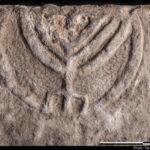A large number of historical movements are known by names that started as insults. The reason being that any name with a positive connotation will be vigorously contested for by different groups, whereas ‘cattle thief‘ is not a particularly desired appellation by anyone, so a movement only has to stop resisting the insult for the name to stick. Torat Eretz Yisrael is, without doubt, a good slogan, but for that very reason everyone wants a piece of it. Thus, Torat Eretz Yisrael is, depending on who you ask, rationalist or mystical, straightforward or esoteric, boomer Kahanist or cringe centrist. One can, if one chooses, try to insist on a particular interpretation as the only legitimate interpretation of the concept, but the wiser path is to accept reality, which is that the term means ‘thing I agree with’, as opposed to the non-Torat-Eretz-Yisrael ‘thing I don’t agree with’.
By contrast, the concept, Nusah Eretz Yisrael, at first, and even second, sight appears to be more concrete and meaningful. However, here too, if we dig enough, we find that the term is used equivocally and for different, sometimes incompatible, purposes.
By common consent, Nusah Eretz Yisrael, entails created a new form of Jewish liturgy that departs from the family of nushaot used today which are all developments of those disseminated by Ge’onei Bavel. However, what that means in practice can mean at least five different possible things:
- A nusah that accords with the Talmud Yerushalmi and other sources from Eretz Yisrael where these conflict with the Talmud Bavli.
- A nusah that draws on the liturgical tradition of the Jews of Eretz Yisrael and other communities under their influence (notably Egypt), as it grew and developed, until the Eretz Yisrael community was overwhelmed by the Crusades, as well as the influence of the more wealthy and powerful Babylonian, and, subsequently, Spanish community.
- A nusah that is more appropriate to the current reality of the Jewish people living in an independent state in Eretz Yisrael.
- A nusah that promotes higher standards of cavanah, by virtue of being more clear, precise, or simply shorter.
- A nusah that reflects a hashkafa believed to be more characteristic of the Judaism of Eretz Yisrael, as opposed to galut.
All of these are legitimately defensible positions, but the very real fact is that while they sometimes correspond, they not infrequently contradict each other. To take a very obvious example, there is a strong tendency within the Nusah Eretz Yisrael sphere to oppose lengthy and ornate piyuttim in tefilah (which, fwiw, I mostly share). This obviously fits with (4), arguably with (3), and one can make a reasonable, if not demonstrable, case for (5) too. The simple fact is, however, that this outright contradicts (2) for the very simple reason that it was precisely in Eretz Yisrael that the tradition of adding piyuttim to tefilah started and developed. Conversely, opposition to their use is found among Babylonian Geonim, and was recurrently reformulated to varying degrees by Rishonim upholding a specifically Babylonian tradition, finally triumphing, for the most part, in the modern era thanks to the Gra.
There are dozens more issues like this where a reasonable case exists for omitting or including a particular text or practice into a Nusach Eretz Yisrael prayer service, and there is no way of objectively arbitrating these questions. As usual, when there is no recognised rule or judge, people fall out and not a lot of progress is made.
What I want to suggest is quite simple: since there is no way to arbitrate these questions, we should not try to arbitrate them, but instead embrace the reality that they are substantially subjective matters of preference. What does that mean in practice, though?
Open Source Nusah
A basic premise of anyone who is interested in Nusah Eretz Yisrael is that Hazal never recorded a fixed nusah and therefore we are at liberty, and perhaps at more than liberty, to depart from the ancestral nusah of whatever Jewish ethno-halachic tradition we were born into. This premise is absolutely true, but the conclusions typically drawn from it do not seem to follow. If, in the time of Hazal, it was considered normal and proper for nusah to vary – within halachic parameters – from town to town, from synagogue to synagogue and from individual to individual, then why should our aim be to create a fixed nusah which everyone can use?
The concept of uniting all of Am Yisrael around one nusah originates with Rav Goren ז”ל. As everyone knows, Nusah Ahid was actually something of a gimmick, a barely touched up version of Nusah Sephard, and thus effectively demand that everyone unify around a (degenerate version of an) Ashkenazi rite. But what if the problem with Nusah Ahid wasn’t just execution, what if it decreasing the liturgical variety of Judaism still further is precisely the wrong way to go about?
The standardised siddur of an edah is an artefact of two historical phenomena. Stage one was when far-flung Jewish communities without the practical ability to make liturgical decisions for themselves reached out for guidance to Babylonian Geonim who, naturally, recommended their own customs. Stage two came with the printing press, which made it very cheap to copy large numbers of a single, long, standardised text, with the result that omnibus siddurim were produced, smoothing over the differences between Jewish communities over large geographical areas, and covering as many liturgical events as possible.
Both of these conditions no longer apply. It has never been easier to do liturgical research using online resources, it is trivially easy to play around with a text on the computer, and incredibly cheap to print out small numbers of prayer texts. There is simply no need, legacy effects and inertia aside, to have a ‘siddur‘ at all in a schul, though they are still useful as household objects for easy consultation across the year. All the different services can be printed in separate booklets, without shem Hashem, so that they can be re-done to meet the changing needs and preferences of the community. Some will prefer, on weekdays, to dispense with paper altogether and just use an app. (Someone has commented to me that they don’t like the idea of davening from a booklet, so just imagine it like a bentscher only slightly bigger).
What all this means is that we now have the practical ability to return to doing tefila as Hazal assumed it should be done. Each community can use its own internal processes to decide what their tefila should look like. For some, this will mean a rite composed almost entirely of Nusah Eretz Yisrael liturgy found in the Cairo geniza, for others it will look like Nusah Edot Mizrah with a few key changes to make it compatible with p’sakim from the Yerushalmi. Both are absolutely fine, assuming that they stay within the bounds of halacha, and I would wager that visitors from one to another will both enjoy the experience and bring back with them ideas about how to improve their own schul’s version.
The plan then is very simple:
- Get together a group of people committed to a high standard of davening, and on board with the general concept of Nusah Eretz Yisrael.
- Agree on a format for tefila that is mutually acceptable to everyone, with the emphasis being on minimising friction, with everyone being clear that it is up for review and revision in the light of practical experience.
- Produce booklets, as nice as the community can afford, for all the different tefilot it will daven together (but not too nice since they will likely be replaced in relatively short order*).
- Make the contents of the booklets available in a editable digital format, which other communities can draw both for inspiration and for copying, according to their preference.
Stage 1 is obviously the hardest, but we’ll never really know how hard it is until people try. However, stage 4 is also crucial to the movement really getting anywhere, and the fallacy of authorial ownership is presently a major stumbling block. So I will try to point the way by example. A couple of days ago, I posted a version of a Prayer for the State of Israel. You may like it, or you may hate it, or you may like parts of it and hate others. If so, please not only feel free, but feel encouraged to take only what you want, discard the rest and make as many or as few changes as you think appropriate. The important thing is that you actually use it, or something like it, because you have a minyan instead of planning for the unattainable perfectly correct nusah you would use if you had one.
*The volume of waste of sacred texts that this is likely to produce per year is less than the average Yeshiva or religious high school gets through in a day.



[…] תפילה בציבור into mere aggregated תפילות היחיד. The use of modern technology to produce new micro siddurim is an important step forward, but the ultimate goal should be to dispense with them. Which brings […]